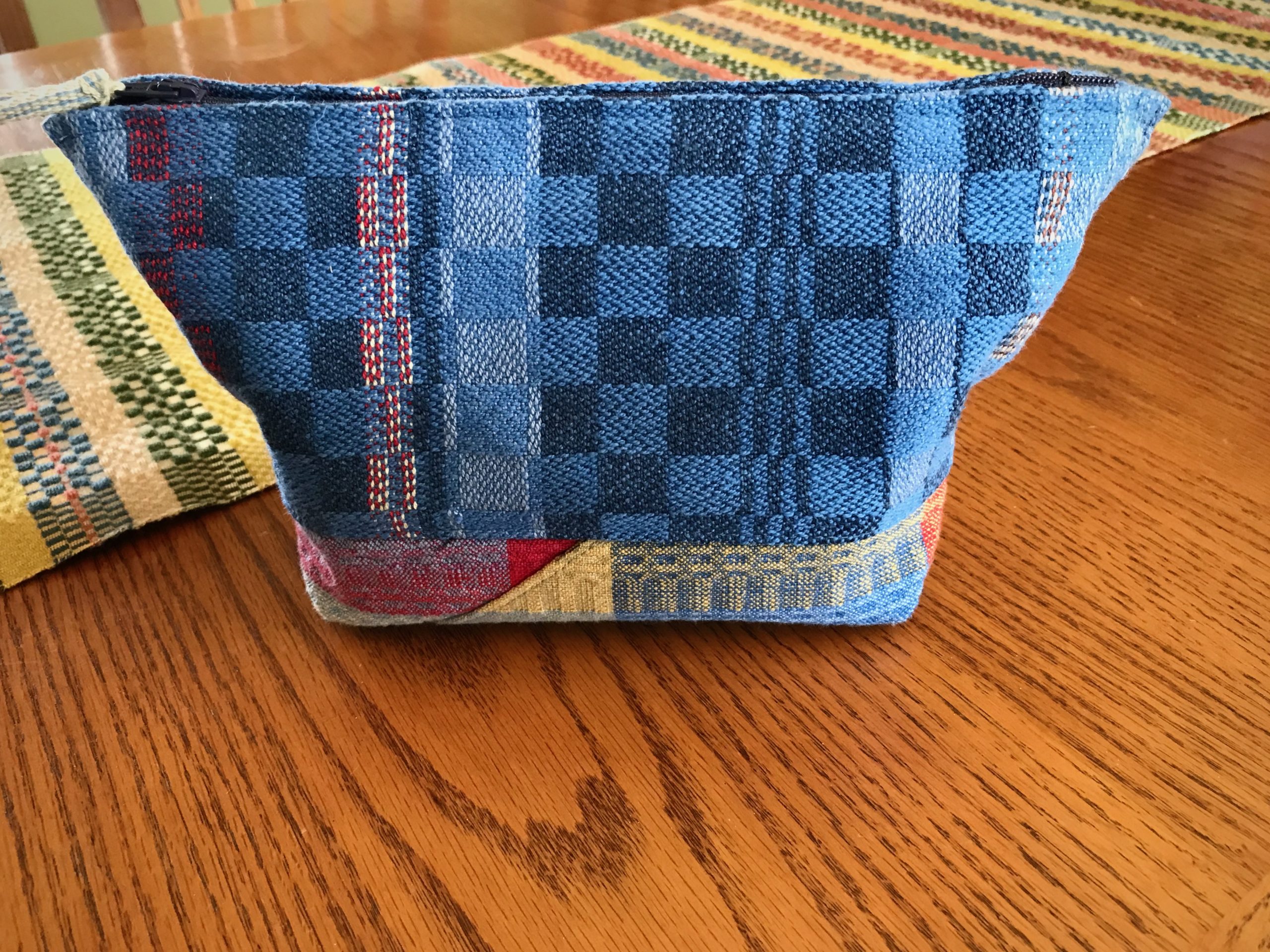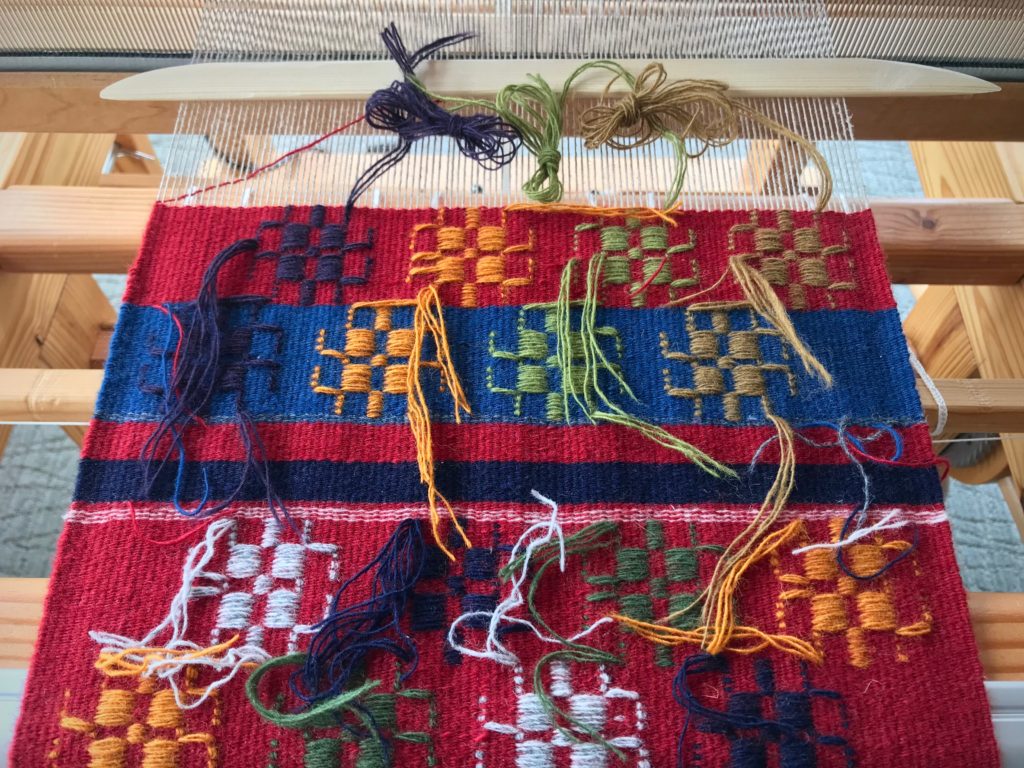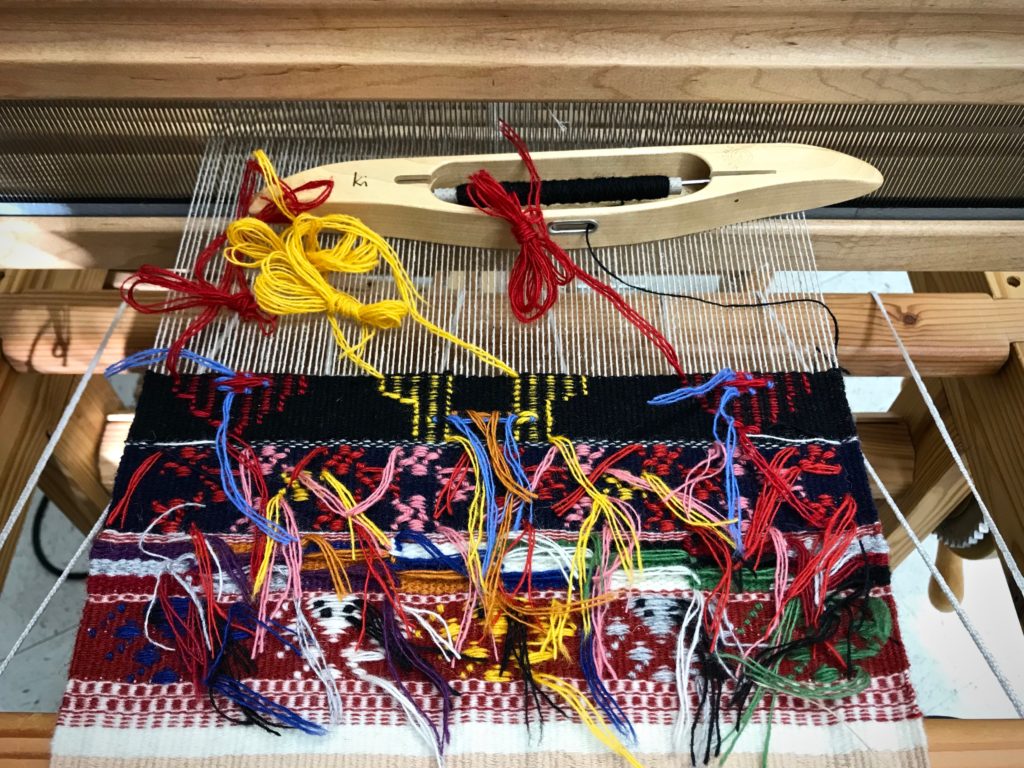On the Road Again was a special challenge issued to members of the San Antonio Handweavers Guild last fall: Pair up (by random selection) with another guild member. Learn where that individual would like to travel and make a handwoven bag that suits her or his needs. I learned that my On-the-Road-Again partner, Donna, is a world traveler and uses small makeup bags to organize her carry-ons. Likewise, I informed Donna that I like small bags that I can use to hold my travel weaving when Steve and I go camping in our Casita travel trailer. Our guild met last week and we got to unveil our special gifts to each other. I had the smart idea to present the bags nested inside each other. Imagine my surprise when I found that Donna had the same smart idea. What fun!

My contribution for Donna is three small zippered bags, and a linen washcloth to take with her on her travels.






Donna’s thoughtful exchange couldn’t be more perfect – three small zippered bags, and a drawstring bag to hold them all together. I have my band-weaving supplies in the bags, ready for my camping trip with Steve in a few days!


Give away your best as an expression of love.
May you be blessed to give and to receive.
Love,
Karen






















